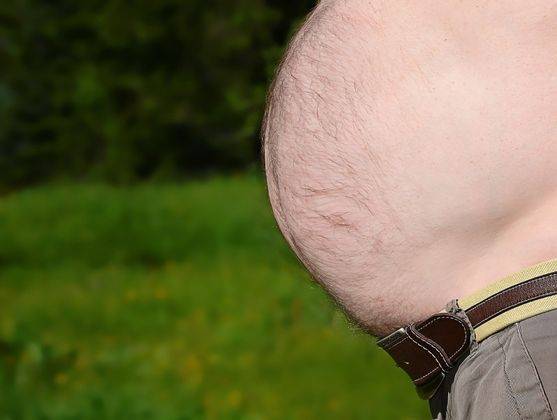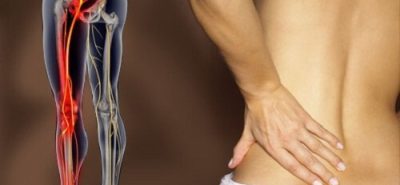What is Fatty Liver Disease?
Last Updated on June 21, 2024
What is Fatty Liver Disease?
Fatty liver disease is a condition in which fat builds up in your liver. There are two main types:
- Non-alcoholic fatty liver disease (NAFLD)
- Alcoholic fatty liver disease, also called alcoholic steatohepatitis.
Alcoholic fatty liver disease is caused by heavy alcohol drinking.
Your liver breaks down most of the alcohol you drink, so it can be removed from your body. But the process of breaking it down can generate harmful substances. These substances can damage liver cells, promote inflammation, and weaken your body’s natural defenses. The more alcohol that you drink, the more you damage your liver.
NAFLD is a type of fatty liver disease that is not related to heavy alcohol use. The excessive buildup of fat is a result of increased triglyceride production due to a high-fat diet or insulin resistance, insufficient removal of triglycerides due to faulty fatty acid breakdown, or defective VLDL (very-low-density lipoproteins) production.There are two kinds:
- Simple fatty liver (steatosis), in which you have fat in your liver but little or no inflammation or liver cell damage. Simple fatty liver typically does not get bad enough to cause liver damage or complications.
- Non-alcoholic steatohepatitis (NASH), in which you have inflammation and liver cell damage, as well as fat in your liver. Inflammation and liver cell damage can cause fibrosis, or scarring, of the liver which may lead to cirrhosis. If the process isn’t interrupted, cirrhosis can lead to:
- Fluid buildup in the abdomen (ascites)
- Gastrointestinal bleeding – Swelling of veins in your esophagus (esophageal varices), which can rupture and bleed
- Confusion, drowsiness and slurred speech (hepatic encephalopathy)
- Liver cancer
- End-stage liver failure, which means the liver has stopped functioning
A liver transplant from recently deceased donors may be the only way to save the patient’s life. Alternatively, it may be possible to have a transplant using a section of liver removed from a living donor. As the liver can regenerate itself, both the transplanted section and the remaining section of the donor’s liver are able to regrow to a normal size.
Important: It can take years for fibrosis or cirrhosis to develop. It’s important to make lifestyle changes in the early stages to prevent the disease getting worse!
Who Gets Non-Alcoholic Fatty Liver Disease (NAFLD)?
Things that put people at risk are:
- Overweight or Obesity
- Insulin resistance, type 2 diabetes or prediabetes
- High cholesterol or high triglycerides
- Metabolic syndrome & metabolic disorders
- High blood pressure
- Polycystic ovary syndrome
- Sleep apnea
- Underactive thyroid (hypothyroidism)
- Underactive pituitary gland (hypopituitarism)
- Have been exposed to some toxins (e.g., organic solvents)
- Have certain infections, such as hepatitis C
- Take certain drugs, such as corticosteroids and some cancer drugs
- Impaired gut health: Recent research suggests that having an imbalance in gut bacteria, problems with gut barrier function (“leaky gut”) or other gut health issues may contribute to NAFLD development
- Have rapid weight loss, particularly following bariatric surgery
What are the symptoms of Fatty Liver?
This disease is a stealth killer. You may have no symptoms in the early stages of fatty liver. It may take many years for fatty liver to become severe enough to cause symptoms. But as the disease progresses and liver damage gets worse, you may start to have symptoms like:
- Fatigue & general weakness
- Weight loss for no apparent reason
- An ache or discomfort in the upper right side of your abdomen
How do I know if I have Fatty Liver Disease?
Because there are often no symptoms at the early stages, it is not easy to find fatty liver disease. Your doctor may suspect that you have it if you get abnormal results on blood tests pertaining to the liver. The condition may also be spotted during an ultrasound scan of your tummy.
However, no single test can diagnose fatty liver. To see if fat is building up in your liver and to rule out other diseases, your doctor may do additional tests such as:
- Blood tests including liver function tests and blood count tests
- An abdominal ultrasound
- A CT scan
- An MRI scan
- A liver biopsy (sample of liver tissue) to confirm the diagnosis, and to check how bad the liver damage is.
How is Fatty Liver Disease Treated?
Treatment includes managing conditions that increase your risk for fatty liver. You can:
- Eat a healthy diet, limiting salt and sugar, plus eating lots of fruits, vegetables, and whole grains.
- Reduce your total cholesterol level.
- Reach a healthy weight (you should aim for a BMI of 18.5 to 24.9 kg/m2). Find out your BMI on this link: BMI Healthy Weight Calculator
- Control diabetes.
- Stop or cut back on drinking alcohol – Even if you have fatty liver disease that isn’t caused by drinking too much alcohol, drinking can still make it worse. This is because alcohol can increase the amount of fat in your liver.
- Stop smoking – If you smoke, stopping can help reduce your risk of heart attacks and strokes. Fatty liver disease may be a clue to the presence of other serious conditions which also need to be addressed.
- Exercise regularly most days of the week (at least 150 minutes/week).
- Get vaccinations for hepatitis A and B, the flu and pneumococcal disease. If you get hepatitis A or B along with fatty liver, it is more likely to lead to liver failure. People with chronic liver disease are more likely to get infections, so vaccinations are important.
Also, ask your doctor or pharmacist about all the medicines you are taking & whether a certain medicine is causing your NAFLD. Some medicines such as some steroids may harm your liver & you have to switch to other safer medicines.
Medication for Fatty Liver
There are no medicines that have been approved to treat NAFLD & more studies are underway.
However, various medicines can be useful in managing the problems associated with the condition. For example, your doctor may recommend medication for obesity, to treat high blood pressure, treat high cholesterol, treat diabetes, etc.
Supplements For Fatty Liver Disease
TUDCA
Tauroursodeoxycholic acid, or TUDCA, is a bile acid derivative that occurs naturally in the body.
TUDCA supports overall liver health. Studies conducted on people suffering from liver cirrhosis and high liver enzymes (cholestasis), showed that TUDCA lowered one hundred percent of the participants’ liver enzymes. Not even one of the people enrolled complained of any side effects. Anyone with liver issues can benefit from TUDCA.
Milk Thistle
Milk thistle, or silymarin, is a herb known for its liver-protecting effects.
Some studies have found that milk thistle, alone or in combination with vitamin E, may help reduce insulin resistance, inflammation and liver damage in people with NAFLD.
In a 90-day study of people with fatty liver, the group who took a silymarin-vitamin E supplement and followed a low-calorie diet experienced twice the reduction in liver size as the group who followed the diet without taking the supplement.
The dosages of milk thistle extract used in these studies were 250–376 mg per day.
However, although experts believe that milk thistle shows promise for use in NAFLD, they feel that more studies are needed to confirm its effectiveness for both short and long-term use.
Berberine
Berberine is a plant compound that has been shown to significantly reduce blood sugar, insulin and cholesterol levels, along with other health markers.
Several studies also suggest that it may benefit people with fatty liver.
In a 16-week study, 184 people with NAFLD reduced their calorie intake and exercised for at least 150 minutes per week. One group took berberine, one took an insulin-sensitizing drug and the other group took no supplement or medication.
Those taking 500 mg of berberine, three times per day at meals, experienced a 52% reduction in liver fat and greater improvements in insulin sensitivity and other health markers than the other groups.
Researchers say that despite these encouraging results, further studies are needed to confirm berberine’s effectiveness for NAFLD.
Omega-3 Fatty Acids
Omega-3 fatty acids have been credited with many health benefits. The long-chain omega-3s EPA and DHA are found in fatty fish, such as salmon, sardines, herring and mackerel.
Several studies have shown that taking omega-3s may improve liver health in adults and children with fatty liver.
In a controlled study of 51 overweight children with NAFLD, the group who took DHA had a 53% reduction in liver fat, compared to 22% in the placebo group. The DHA group also lost more belly fat and fat around the heart.
Furthermore, in a study of 40 adults with fatty liver, 50% of those who took fish oil in addition to making dietary changes had reductions in liver fat, while 33% experienced a complete resolution of fatty liver.
The dosages of omega-3 fatty acids used in these studies were 500–1,000 mg per day in children and 2-4 grams per day in adults.
Although all the studies above used fish oil, you can get the same benefits by consuming fish high in omega-3 fats several times a week.
Pyrroloquinoline Quinone (PQQ)
A new study shows that a natural supplement may stop NAFLD and its awful complications. It’s the antioxidant pyrroloquinoline quinone (PQQ).
Growing evidence suggests NAFLD has its roots in the womb. Children born to mothers who eat a junk food-laden Western diet are more likely to be obese and have fatty liver.
Preliminary tests have shown that PQQ supplements might reverse these detrimental effects.
Professor Karen Jonscher and her colleagues at the University of Colorado gave PQQ to mice who were predisposed to getting NAFLD. Not only did it reduce fatty liver in the mice, but it also prevented the condition from being passed to their offspring.
Dr. Jonscher noted that more research is needed to confirm that PQQ works in humans with fatty liver. She is planning human studies. But she expects PQQ will help humans the same way it did mice.
In the meantime, “people with fatty liver disease could potentially benefit” from PQQ, Dr. Jonscher said.
S-Adenosylmethionine (SAMe)
S-adenosylmethionine or as commonly known SAMe. Currently, there are four main uses of SAMe as a dietary supplement: depression, osteoarthritis, fibromyalgia, and liver disorders.
SAMe has been shown to be quite beneficial in several liver disorders including cirrhosis, Gilbert’s syndrome, and oral contraceptive-induced liver damage. Its benefits are related to its function as the major methyl donor in the liver and promotion of detoxification reactions.
SAMe is usually recommended at a dosage of 200 to 400 mg twice daily. SAMe is generally extremely well- tolerated. No significant side effects have been reported with oral SAMe other than the occasional nausea and gastrointestinal disturbances. SAMe is considered safe during pregnancy and lactation.
There are no known drug interactions with SAMe, but individuals with bipolar (manic) depression should not take SAMe unless under strict medical supervision because SAMe’s antidepressant activity may lead to the manic phase in these individuals.
Betaine
Betaine, an amino acid that is a component of the metabolic cycle of methionine, aids in liver function, detoxification and cellular functioning within the body. It’s most crucial role is to help the body process fats.
The recommended amount of betaine supplementation is normally between 1,000 to 2,000 milligrams, taken three times daily.
It’s not recommended that pregnant women or women who are breastfeeding take betaine supplements without more reports being conducted first to show it’s safe.
Beta Glucans
Beta glucans are sugars that are found in the cell walls of yeasts, algae, lichens, muchrooms, and plants, such as oats and barley.
Research indicates beta glucan can nutritionally aid in fatty liver disease and help reduce toxic liver effects of acetaminophen (Tylenol, Panadol, etc.).
Alpha Lipoic Acid & Vitamin E
ALA and vitamin E should be considered as therapy in patients with nonalcoholic fatty liver disease and nonalcoholic steatohepatitis to reduce inflammation and the profibrogenic effect on the liver to preclude end-stage liver disease and hepatocellular carcinoma.
If you choose to supplement, avoid synthetic versions of Vitamin E labeled as “dl-alpha-tocopherol”. The natural form of vitamin E, is listed as “d-alpha-tocopherol”.
Whey Protein
Murielle Bortolotti from the University of Lausanne, who headed the research, and colleagues gave 11 obese, non-diabetic females diet supplementation with three 20 grams servings of whey protein a day (a total of 60 grams daily) for about a month. After four weeks of consuming whey protein, the women’s IHCL had plummeted by about 21%, fasting plasma triglycerides decreased by 15% and total plasma cholesterol concentration dropped by over seven percent. Dr. Bortolotti and her co-workers pointed out that the IHCL reduction was not accompanied by any major changes in body weight or body fat mass.
“This therefore indicates that the improved IHCL and plasma triglyceride profiles were to be attributed to an effect of protein rather than to changes in body composition,” the research team said in a media statement. They added that their study suggests that a high-protein whey supplemented diet may reduce the risk of both non-alcoholic fatty liver disease as well as cardiovascular disease in obese patients.
L-Carnitine & Lecithin
L-carnitine may enhance fat metabolism by the liver & protect mitochondrial function, whereas lecithin may prevent some of the tissue damage caused when oxygen reacts with fat during routine chemical reactions in the liver (lipid peroxidation).
Italian researchers have found that L-carnitine supplementation can have a positive effect in the treatment of people with NASH.
Probiotics
While a lot of research has focused on the influence gut bacteria have on your gastrointestinal health, recent research presented at the 2018 Experimental Biology meeting in San Diego reveals probiotics also impact your liver function. This study focused primarily on a probiotic called lactobacillus rhamnosus GG (LGG), which is found in many commercial probiotic supplements.
Mice were first given food with added LGG for two weeks, and were then given a toxic dose of acetaminophen, known to cause serious liver damage by increasing oxidative stress. Interestingly, the animals pretreated with LGG had far less liver damage than untreated mice when given an acetaminophen overdose.
According to lead author Bejan Saeedi, doctoral candidate at Emory University,1 “Administration of the probiotic LGG to mice improves the antioxidant response of the liver, protecting it from oxidative damage produced by drugs such as acetaminophen.” Earlier animal studies have also shown LGG helps protect against alcoholic liver disease and nonalcoholic fatty liver disease, the latter of which is primarily driven by diets high in sugar and processed foods.
Earlier research by the same team reveals the mechanism behind this finding. It appears LGG protects the liver against oxidative damage by activating Nrf2, a biological hormetic that upregulates superoxide dismutase, catalase and other intercellular antioxidants. Nrf2 not only lowers inflammation, but also improves mitochondrial function and stimulates mitochondrial biogenesis. Aside from consuming LGG-containing probiotics, Nrf2 can also be activated by:
- Consuming Nrf2-boosting food compounds such as sulforaphane from cruciferous vegetables, foods high in phenolic antioxidants, the long-chained omega-3 fats DHA and EPA, carotenoids (especially lycopene), sulfur compounds from allium vegetables, isothiocyanates from the cabbage group and terpenoid-rich foods.
Bottom Line for Fatty Liver
Fatty liver can lead to a number of serious health problems. Fortunately, it can be reversed if addressed at an early stage.
Following a healthy diet, increasing physical activity and taking supplements can reduce excess liver fat and decrease the risk of its progression to more serious liver disease.







Leave a Reply